6 Minutes
When NASA's James Webb Space Telescope began sending back extraordinary infrared images, a subtle electronic quirk threatened to blur some of its most delicate observations. A team in Sydney solved the problem from Earth using AI-powered software, restoring Webb's ability to deliver razor-sharp pictures of exoplanets, stars and other faint targets — and they did it without a single spacewalk.
From blurred pixels to a software lifeline
The issue cropped up in one of Webb's most precise instruments: the Aperture Masking Interferometer (AMI), an Australian-designed component that lets astronomers combine light from separate parts of the primary mirror to achieve extraordinarily high spatial resolution. Soon after operations began, researchers noticed faint smearing in AMI data that reduced contrast and masked the faintest features.
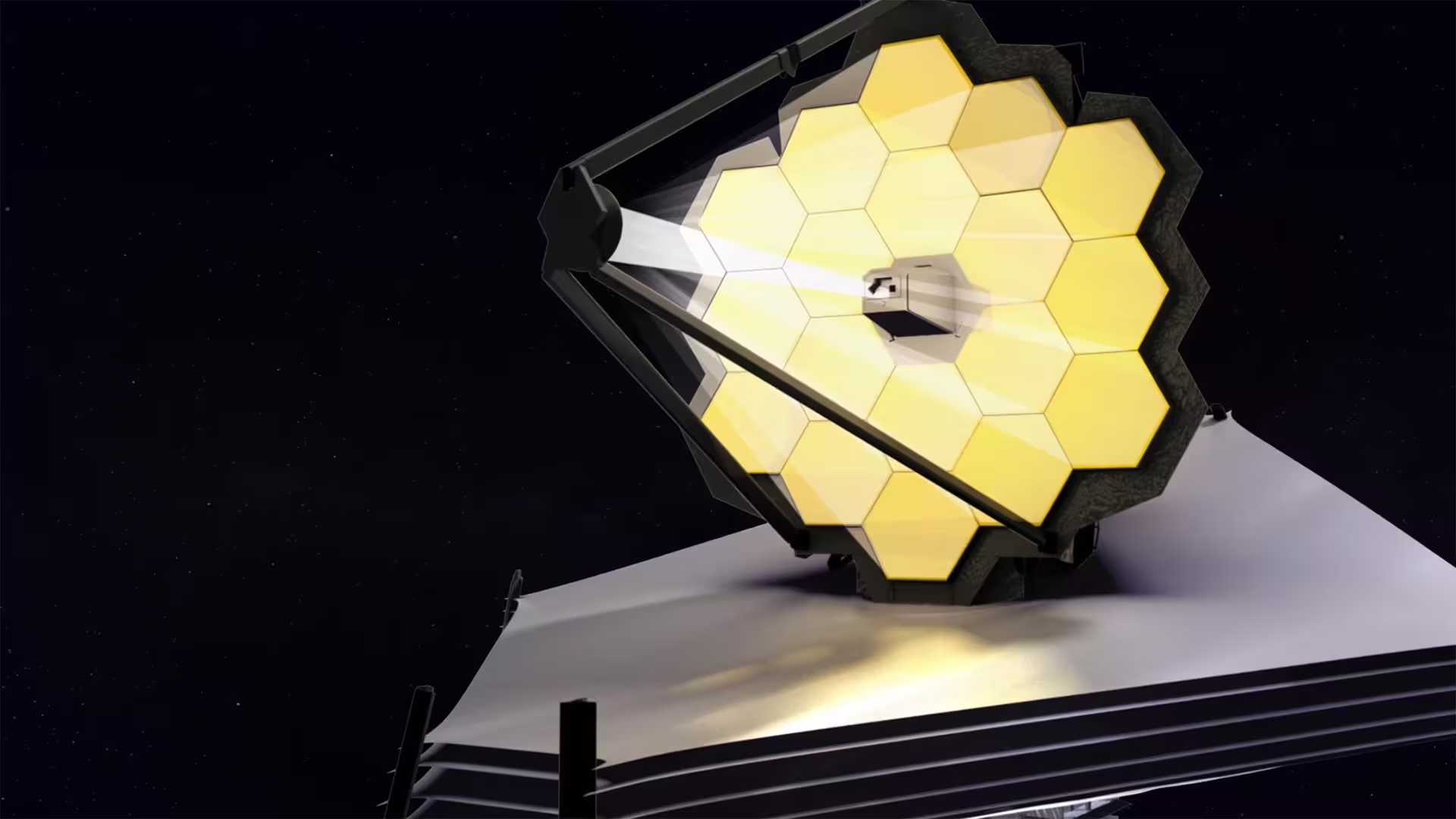
The James Webb Space Telescope is NASA’s $10 billion infrared observatory designed to explore the universe’s earliest galaxies, study distant exoplanets, and reveal cosmic details beyond the reach of any previous telescope. Credit: NASA’s Goddard Space Flight Center
Rather than redesign hardware or plan a costly in‑space repair, a small group at the University of Sydney — led by Professor Peter Tuthill and two doctoral students, Louis Desdoigts and Max Charles — developed a software-based cure. Their tool, called AMIGO (Aperture Masking Interferometry Generative Observations), uses simulations and neural networks to model how the telescope's optics and detector electronics actually behave in orbit, and then removes the distortion in post-processing.
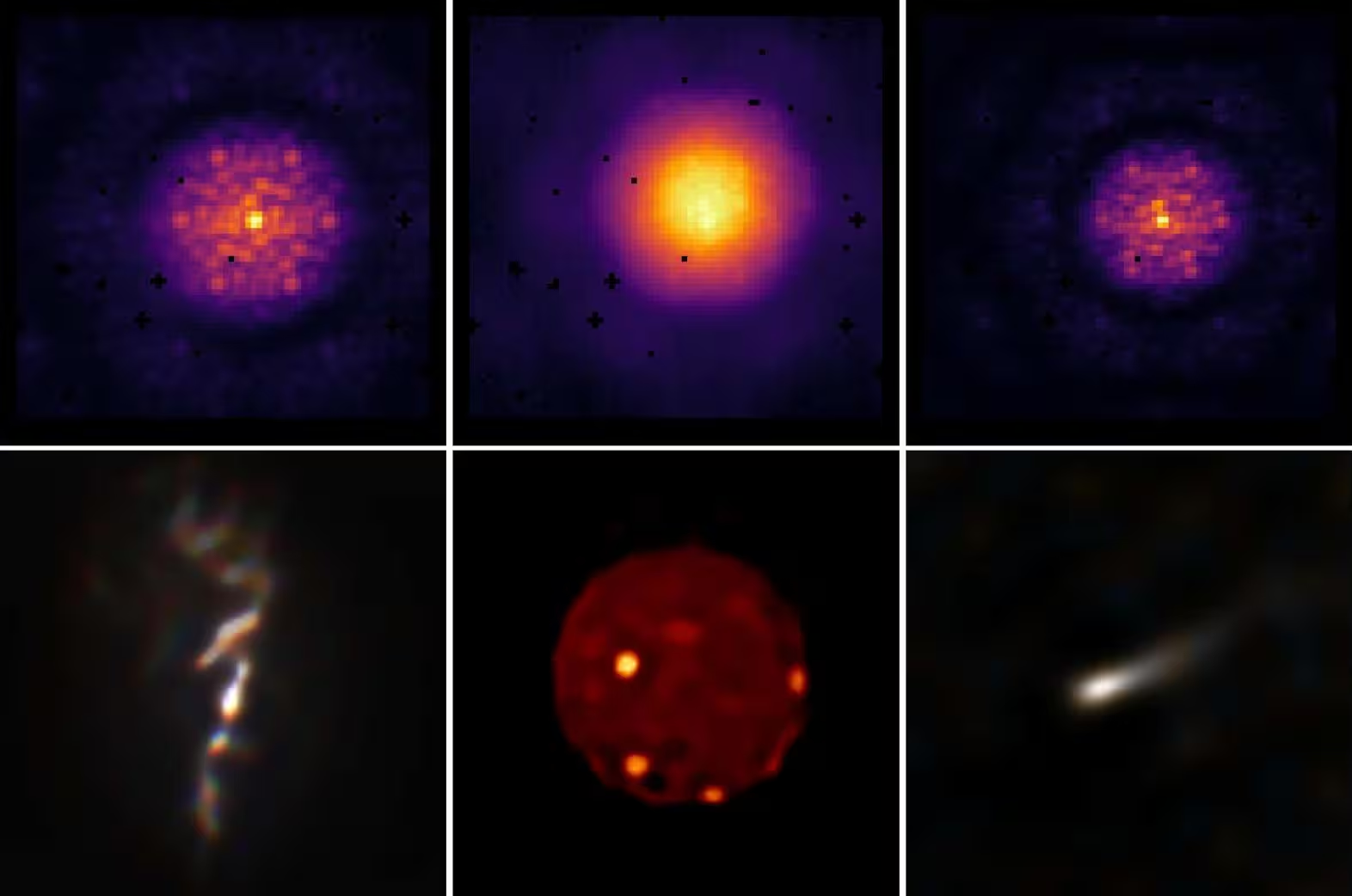
Sharpening the JWST images: top row is raw data images of galaxy NGC 1068, Jupiter’s moon Io and Wolf-Rayet star 137 (or WR 137). The bottom row shows sharpened or ‘deblurred’ images after being processed by the pipeline developed by Louis Desdoigts and Max Charles. Credit: Max Charles/University of Sydney
What was causing the blur?
The team traced the problem to a detector-level effect called the ‘‘brighter-fatter’’ phenomenon. In some infrared detectors, photoelectrons generated by a bright pixel can influence nearby pixels as charge migrates or electrostatic fields distort the local response. The result is a subtle spreading of light that reduces image sharpness — especially damaging to interferometric modes like AMI that rely on precise relative intensities across small sub-apertures.
AMIGO works by forward-modeling both the optical interferometric signal and the detector's imperfect response, then training a neural network to recover the true scene. Instead of treating the blur as an unavoidable noise floor, the software treats it as a predictable instrument signature that can be reversed algorithmically.
How the fix was developed and deployed
Louis Desdoigts and Max Charles built AMIGO while supervised by Professor Tuthill and Associate Professor Ben Pope (Macquarie University). The approach combined laboratory detector characterization, physics-based simulations of Webb's AMI optical paths, and machine learning to bridge gaps between idealized models and real in-flight data.
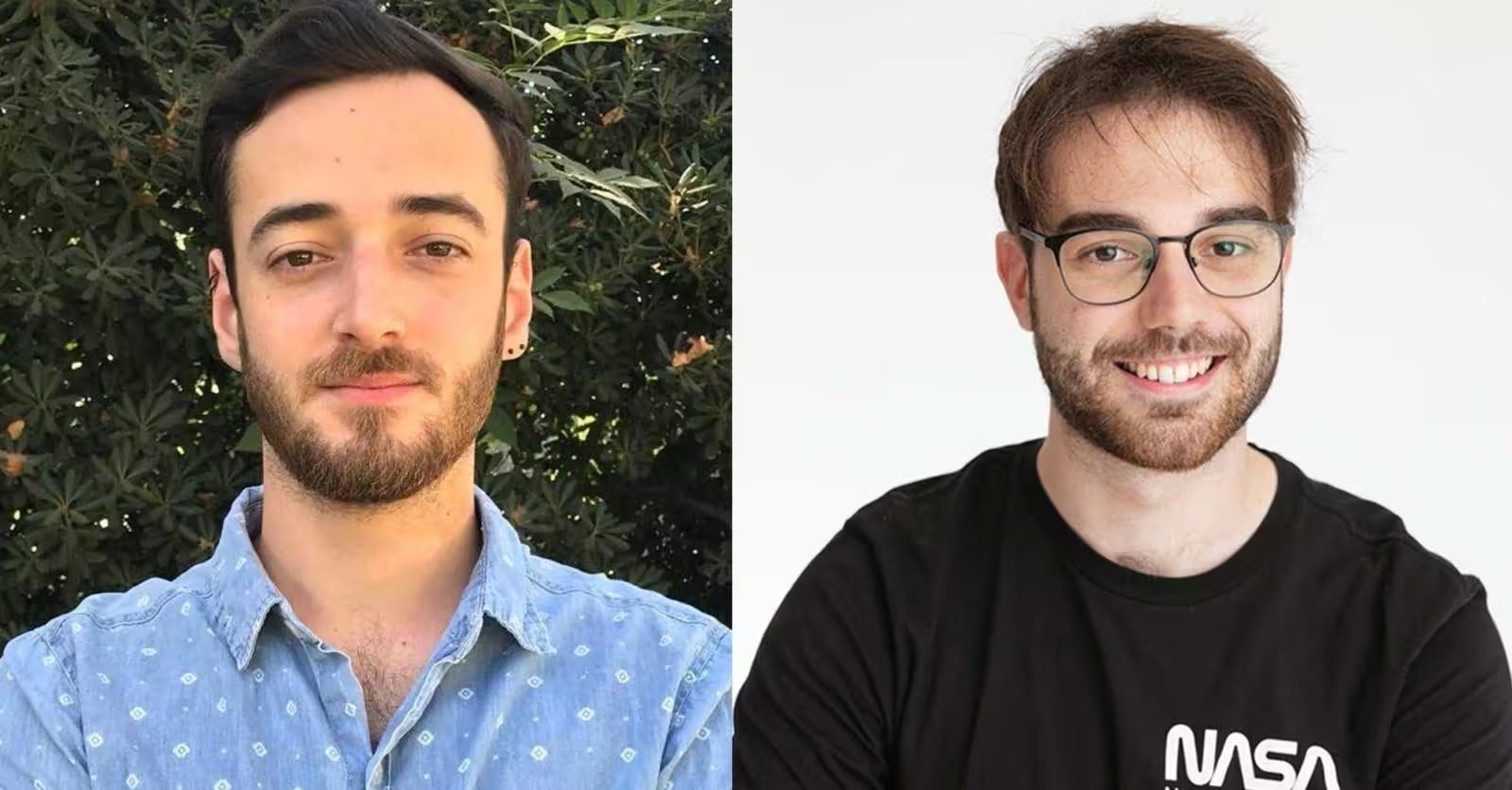
Dr. Louis Desdoigts (left), now a postdoc at Leiden University in the Netherlands, and Max Charles, who is completing his doctorate at the University of Sydney. Credit: University of Sydney
Deploying the pipeline did not require any changes aboard Webb: the team applied the correction on the ground to archival and new AMI exposures. The results were immediate — previously muddied targets regained contrast, enabling direct detections and finer structural details.
Scientific payoffs: sharper images, new discoveries
With AMIGO, Webb has produced clearer images of several challenging targets. The pipeline enhanced detections of a dim exoplanet and resolved a red-brown dwarf orbiting HD 206893, about 133 light-years away. Other demonstrations include a sharper view of a black hole jet, a volcanic surface snapshot of Jupiter’s moon Io, and detailed structure in the dusty winds of Wolf-Rayet star WR 137.
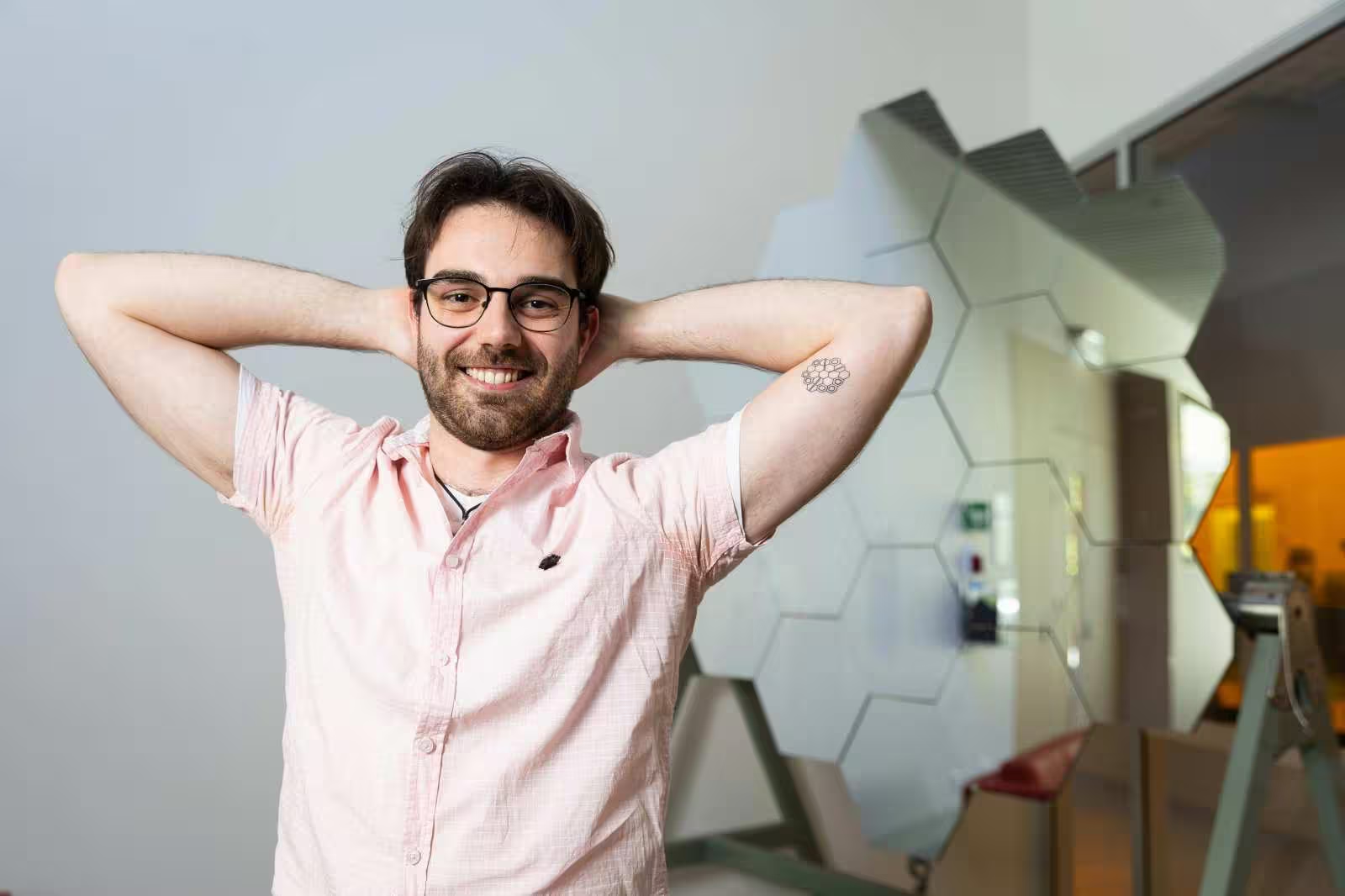
Max Charles models his tattoo of the ‘Non-Redundant Mask’ he helped repair. Credit: University of Sydney
These improvements extend JWST’s scientific reach without additional mission cost. In practical terms, AMIGO boosts sensitivity to faint companions and fine features, helping astronomers study planet atmospheres, circumstellar material and compact sources with more confidence.
Why this matters for future space missions
The Sydney team’s success highlights a growing trend: software-first solutions can correct or mitigate hardware imperfections long after launch. Instruments are complex systems where subtle detector physics, electronics, and optics interact. Building flexible analysis tools that model those interactions can extend instrument lifetimes, maximize science return and reduce the need for risky, expensive hardware interventions.
As Professor Tuthill put it, ‘‘Instead of sending astronauts to bolt on new parts, they managed to fix things with code. It’s a brilliant example of how Australian innovation can make a global impact in space science.’’
Expert Insight
Dr. Aisha Rahman, an instrumentation scientist with experience in space telescopes, commented: ‘‘AMIGO is a textbook example of systems thinking. The team combined detector physics, optical modeling and modern machine learning to solve a problem that would otherwise require major engineering changes. It’s a cost-effective strategy that other missions should emulate — especially as detectors become more complex and sensitive.’’
Desdoigts, now a postdoctoral researcher at Leiden University, said the result is ‘‘incredibly rewarding’’ and underscored the potential for software to extend Webb’s capabilities. Both primary studies are available on the pre-print server arXiv; Dr. Desdoigts' paper has completed peer review and will appear in Publications of the Astronomical Society of Australia.
The research also demonstrates the value of international collaboration: an Australian-designed instrument, refined with machine learning methods developed by early-career researchers, now delivers sharper science for the global astronomical community. The team is actively sharing AMIGO with JWST researchers worldwide to accelerate new discoveries.
Implications and next steps
Looking forward, the authors and collaborators plan to integrate AMIGO-style calibrations into standard JWST data pipelines for AMI and explore whether similar approaches can correct other detector effects across Webb’s instruments. If successful, this would make post-launch software calibration a routine part of mission operations, saving time and increasing scientific yield.
Source: scitechdaily
Comments
datapulse
Is this fix generalizable to other detectors? sounds promising but could the AI invent features if training set is biased, or hide real signals?
astroset
wow didnt expect Aussie coders to rescue JWST from blur, feels like sci thriller tech magic lol... curious how robust it is tho

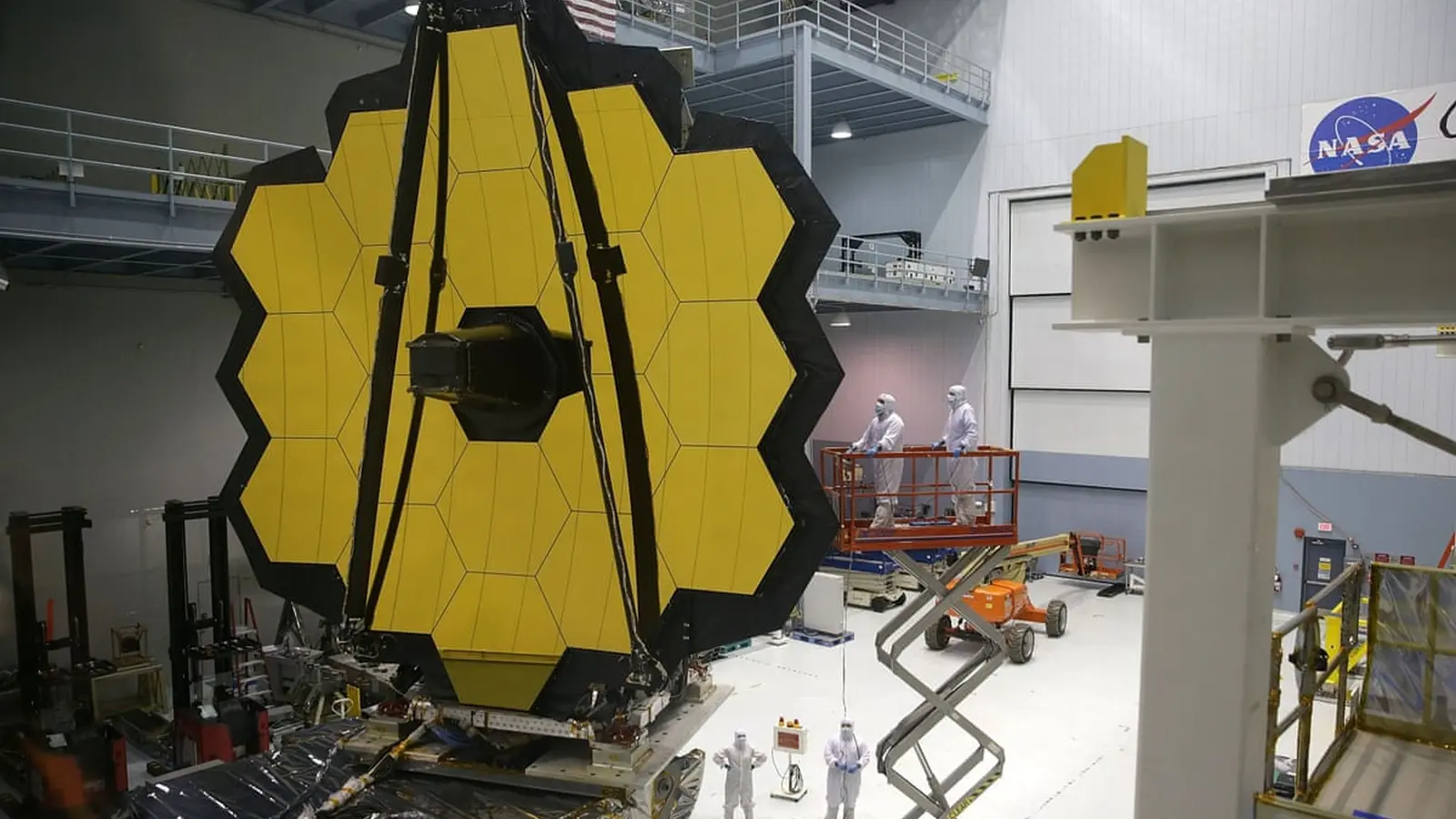
Leave a Comment